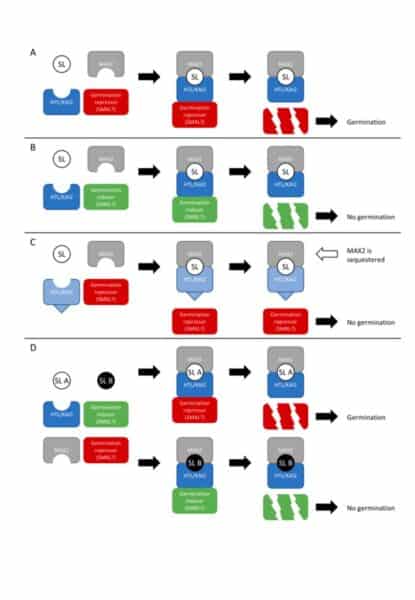Root parasitic plants of the Orobanchaceae, broomrapes and witchweeds, pose a severe problem to agriculture in Europe, Asia, and especially Africa. These parasites are totally dependent on their host for survival, and therefore their germination is tightly regulated by host presence. Indeed, their seeds remain dormant in the soil until a host root is detected through compounds called germination stimulants. Strigolactones (SLs) are the most important class of germination stimulants. They play an important role in planta as a phytohormone, and, upon exudation from the root, function in the recruitment of symbiotic arbuscular mycorrhizal fungi. Plants exude mixtures of various different SLs, possibly to evade detection by these parasites and still recruit symbionts. Vice versa, parasitic plants must only respond to the SL composition that is exuded by their host, or else risk germination in the presence of non-hosts. Therefore, parasitic plants have evolved an entire clade of SL-receptors, called HTL/KAI2s, to perceive the SL cues. It has been demonstrated that these receptors each have a distinct sensitivity and specificity to the different known SLs, which possibly allows them to recognize the SL-blend characteristic of their host. In this review we will discuss the molecular basis of SL sensitivity and specificity in these parasitic plants through HTL/KAI2s, and review the evidence that these receptors contribute to host specificity of parasitic plants.
https://academic.oup.com/pcp/advance-article/doi/10.1093/pcp/pcad058/7198594
